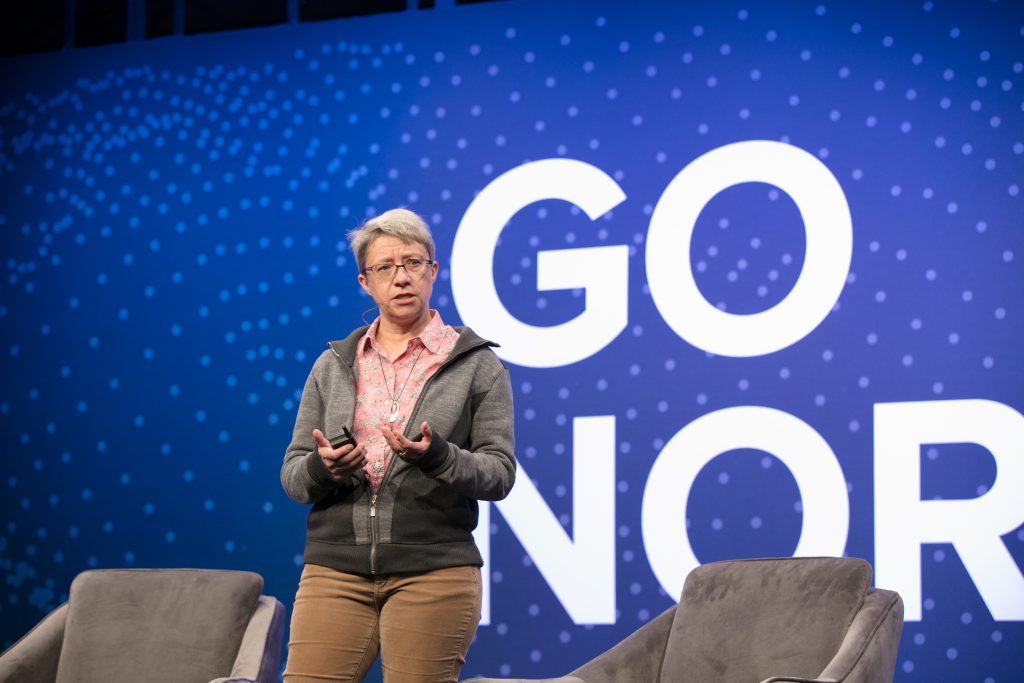Last Thursday, AI experts and Canadian tech leaders convened at Google’s Go North Summit to discuss some of the issues regarding Artificial Intelligence. The focus throughout the day was not so much on the technology itself, but rather the larger implications it will have on society.
Attendees heard from world-class AI experts, government officials, and had a chance to hear from Prime Minister Justin Trudeau. Topics of discussion ranged from the state of the nation, regulations around AI, the pitfalls of the technology and Sidewalk Toronto.
AI: The State of the Nation
Canada has a data advantage and a healthy academic environment for bringing up the next generation of AI talent.
So far, the federal government has invested $300 million and the private sector has made an investment of $230 million in just the first 3 quarters of 2017, including Google’s investment in and support of Vector Institute.
Living up to the hype around AI, Canadian tech companies continue to be most represented in major machine intelligence categories, as shown in the image below.

It is predicted that by 2030, growth attributed to AI will be $15.7 trillion of the global economy and Canada wants a slice of that pie. To ensure that happens, collaboration is key, both globally and locally. A Pan-Canadian AI strategy has been proposed, which will see an investment of $125 million.
Both the PM and Minister of Innovation spoke at Go North about the government’s Global Skills Strategy, which allows Canadian companies to bring in workers with specialized skills (like AI) to Canada in a matter of 2 weeks.
“If we want to play a leadership role in artificial intelligence, if we want to continue to grow in this area, we need to create a strong, domestic pipeline in Canada,” said Navdeep Bains, Minister of Innovation, Science and Economic Development.
Concerns regarding AI & how we can design to solve
Two key questions being asked during Go North 17: how do we keep the technology ethical, free of bias, and how do we make it accessible to many as opposed to keeping it a domain of a few?
“There are probably in the low thousands of people that are contributing to what will become very powerful technology very quickly,” Shivon Zilis, Director at Open AI, said onstage.
Shivon highlighted three guiding principles to keep the technology ethical and equal:
- This technology is coming no matter what, so let’s use it for net positive good.
- Ensure a healthy balance of power. Think about ways we can get more people involved in the conversation.
- Create the best possible environment for implementation of AI and let’s be responsible.
Speaking from a different perspective, David Lennie, SVP, Data & Analytics at Shopify, urged attendees to remember that AI models are a reflection of their creators, and there is a real concern about biases being injected into the models. Wendy Foster, Director, Data Products, Wattpad, echoed this sentiment and pointed out that “the biggest problem facing AI is algorithmic bias.”
According to the experts, tecnology companies must build with this bias in mind, using techniques to test their data against other data sets to see if any unnatural biases have appeared. Another key step is to outline all the assumptions you are making before you head into the algorithmic development phases, systematically break those assumptions through analytics, and unpack them by looking at user behavioural data.
Can Sidewalk Toronto turn the city into a “digital pleasantville?”
Recently, Sidewalk Labs and Waterfront Toronto announced a new project, Sidewalk Toronto. The subject was also brought up at Go North, given Google’s involvement in the project.
“We are actually at the dawn of what we call the 4th urban technology revolution, where there is a set of digitally related technologies that are now coming to a place of maturity and evolution,” said Don Doctoroff, CEO of Sidewalk Labs. “If you can combine them, really cutting-edge technology with very smart urbanism, and that’s really important, we can begin to bend the curve on those quality of life metrics that are getting harder and harder to affect in the normal course.”
Will Fleissig, President and CEO, at Waterfront Toronto, said he hopes to use Quayside as a test bed and a pilot to look at new forms of financing, new building technologies, new ways for the grid infrastructure and new ways of getting around. The Waterfront Toronto CEO said that if the city can demonstrate these new approaches would work, policymakers could be more easily convinced to scale the model into other cities across the nation.
But as neighbourhoods across Toronto continue to evolve organically, a big question that remains is how municipalities can guard against being too prescribed or too sterile when it comes to city planning?
“It starts with a view that this is not about the technology,” said Doctoroff. “At the end of the day, it is not about doing cool things. What it’s about, is staying focused on quality of life. And I think if you start with that as your north star, you really risk much less of that sort of thing happening.”

So where are we headed?
During Go North, Francoise Beaufays, a Research Scientist at Google, delivered a fascinating session about AI being used in our cell phone keyboards.
“If it wasn’t for the power of AI, we wouldn’t have been able to scale so quickly to so many different languages,” Beaufays said. “AI has this wonderful property that it separates the algorithms from the data and once you have a good algorithm, you can feed in data. In this case, language dependent data, to build more keyboards.”
Dr. Demis Hassabis, Co-founder and CEO of DeepMind, weighed in on this and said that there will be a shift from the current traditional AI to Artificial General Intelligence (AGI). “The aim of AGI is to mimic the human brain’s functionality. It is flexible, it is adaptive and it is robust and what I mean by robust is that it can deal with the unexpected,” Hassabis said.
Google’s Geoffrey Hinton, an artificial intelligence pioneer, also outlined an advance in the technology that improves the rate at which computers correctly identify images and with reliance on less data.
The various examples demonstrate that what’s really exciting about Artificial intelligence is the impact that it has on so many different sectors. But a key takeaway from Go North is that policymakers need to look at AI as not only a driver of economic policy, but also an impactful player on our current social structures. Ignoring the latter for the former could be a disaster.
Images courtesy Go North.


